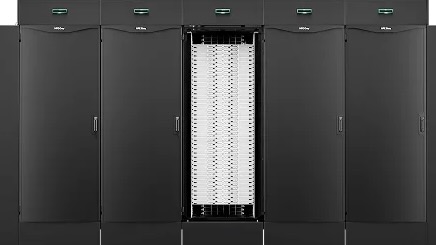Your Network Isn’t Just Infrastructure—It’s Your Biggest Business Risk. RUCKUS Networks Builds the Mitigation Strategy.
In today’s digital economy, relying on a generic enterprise network in mission-critical environments creates a critical single point of failure that threatens the mission. For IT leaders overseeing complex, high-density environments—from integrated smart buildings to vast university campuses—network performance is no longer a passive feature, but the core infrastructure driving revenue, resident satisfaction, and mission continuity. This demanding shift, from general connectivity to highly resilient, purpose-built architecture, is why RUCKUS Networks focuses its entire strategy on high-stakes vertical markets – and helping them achieve outstanding/superior business outcomes.
RUCKUS, which started life as Ruckus Wireless in 2004, was born to solve the thorny challenge of delivering reliable, high-quality video over standard Wi-Fi. This led to the invention of its patented adaptive antenna technology, known as BeamFlex—a foundation for their reputation for superior wireless performance and simplified troubleshooting in congested environments. Their original go-to-market strategy was, and remains, intensely partner-driven, focusing on providing technology that works flawlessly in challenging, high-density settings like airports, hotels, and schools.
The Experience-Critical Focus
Today, RUCKUS Networks, now a part of CommScope, has invested heavily in specific, high-stakes vertical markets where the network cannot fail. As showcased across their recent blog content, the focus is sharp: Manufacturing, Warehousing and Logistics (MWL); Hospitality; Multi-Dwelling Units (MDU) and Senior Living; Large Public Venues (LPV); K-12 and Higher Education; and ProAV. In these sectors, network failure translates directly to business and operations disruption, resident dissatisfaction, or learning loss—a risk IT must control.
This purpose-driven approach means the product isn’t generalized. Instead, RUCKUS builds features around specific vertical challenges—from RUCKUS One software suites tailored to specific vertical industries and their different stakeholders’ needs (e.g., in Hospitality, from the hotel owner to the local franchisee and IT staff), IoT integration for smart buildings and secure network segmentation (Dynamic PSK) in MDUs to providing seamless, ultra-high-density coverage in manufacturing facilities and outdoor stadiums. For the IT buyer, this means a clearer, faster return on investment (ROI) because solutions arrive pre-optimized to specific vertical needs, sharply reducing the need for costly custom integration and deployment risk.
Vertical Trends and Competitive Edge
Across these markets, the current trend is less about simply achieving speed and more about incorporating intelligence and convergence. RUCKUS is addressing this with integrated AI-powered analytics (RUCKUS AI) to automate anomaly detection, prioritize critical events, and automatically tune network performance. This capability cuts troubleshooting time (MTTR) significantly, enabling lean IT teams to meet guaranteed performance standards (SLAs). They’ve also been aggressive in adopting new standards, being among the first to offer AI-driven Wi-Fi 7 access points, securing the long-term value of your investment.
While major industry players like Cisco Meraki often require a centralized, cloud-only subscription architecture, and others like HPE Aruba offer a more bifurcated choice, RUCKUS differentiates itself through complete architectural flexibility. They offer customers a true, interchangeable choice between cloud-managed (RUCKUS One), robust on-premises controller-based (SmartZone), or simple controller-less (Unleashed) solutions. This level of adaptability ensures IT leaders can deploy the ideal architecture for their specific security, scale, budget, and operational requirements, avoiding the vendor lock-in and operational rigidity often imposed by competitors.
Global Strategy: Targeting High-Growth Regions
Strategically, RUCKUS is placing significant bets on emerging high-growth regions. Recent strategic hires and announcements highlight a strong focus on expanding vertical market coverage across the Middle East and Africa (MEA). This includes a particular emphasis on the hyper-accelerated digital transformation projects occurring in nations like the UAE and Saudi Arabia. This regional push shows RUCKUS is not only focusing on what markets need exceptional performance but where that need is most rapidly accelerating, ensuring they are positioned to capture high-volume enterprise deployments of the future.
By delivering guaranteed performance in the most challenging environments, RUCKUS is making purpose-driven networking the expectation. They are cementing their position as the specialized, high-performance challenger brand against generalized industry incumbents, giving IT operational confidence and delivering mission and business-critical results across the globe.
Analysis
The strategic shift by RUCKUS Networks toward “Purpose-Driven Networking” for experience-critical vertical markets is a solid response to an emerging industry trend: the rising insistence by specialized industries on bespoke, outcome-focused technology. Industries such as Manufacturing, Hospitality, and Higher Education are no longer satisfied with generic, horizontal network solutions because connectivity failure directly impairs their core business mission, revenue, or safety performance. This elevates the network from a cost center to a vital, mission-critical operational platform. Consequently, these verticals are dedicating resources to vet networking partners who provide pre-optimized features—like secure segmentation, specialized IoT integration, and guaranteed service levels—which mitigate business risk and deliver a faster return on investment compared to solutions requiring extensive custom configuration. The current mandate is shifting from merely providing high speed networking to delivering verifiable intelligence and resiliency at the application layer.
RUCKUS achieves a competitive stance by offering unmatched deployment flexibility compared to major rivals like Cisco Meraki and HPE Aruba. While competitors often push customers toward rigid, single-architecture models—such as Meraki’s cloud-only subscription—RUCKUS allows clients to interchange between cloud-managed, robust on-premises, and controller-less deployments. This adaptability is key for IT leaders managing environments with stringent security, compliance, or budget constraints, effectively helping them sidestep the operational rigidity and vendor lock-in common in the networking industry. Beyond architectural choice, RUCKUS is keeping pace with its peers by incorporating next-generation technology, including AI-powered analytics (RUCKUS AI) for automated troubleshooting, and adopting the latest standards, such as the RUCKUS Wi-Fi 7 Access Points.
This move to purpose-driven networking carries significant long-term implications for the entire networking sector. It fundamentally accelerates the fragmentation of the enterprise market, forcing competitors to either rapidly deepen their own vertical expertise or risk losing high-value, mission-critical business to specialized challengers. The focus on guaranteeing business outcomes and service level agreements (SLAs), rather than simply selling hardware specifications, elevates the expected standard for all enterprise vendors. For the broader industry, this means that product development roadmaps must prioritize integrated security, seamless operational technology (OT) convergence, and sophisticated AI-driven management tools that dramatically reduce the Mean Time to Resolution (MTTR). RUCKUS’ strategic expansion into high-growth regions like the Middle East and Africa confirms the global nature of this specialized demand, positioning them to capitalize on rapid digital transformation where network performance is non-negotiable.
Competitive Outlook and Advice to IT Buyers
These sections are only available to NAND Research clients and IT Advisory members. Please reach out to [email protected] to learn more.



